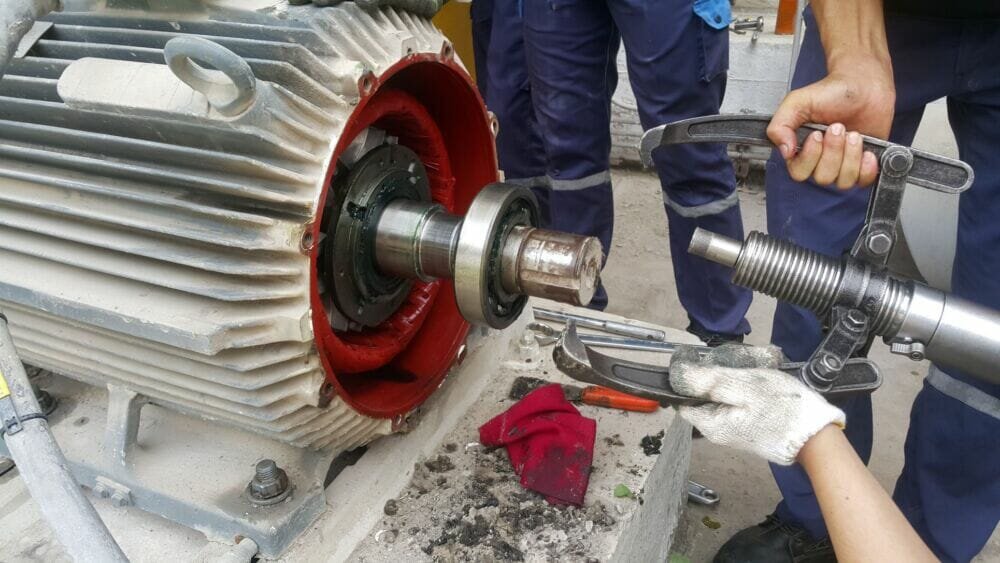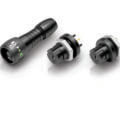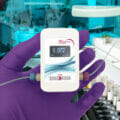According to Deloitte, it’s estimated that poor maintenance strategies can reduce a plant’s overall production capacity from between five to 20 per cent. So, if boosted maintenance means boosted production, why aren’t all facility managers maintenance-happy? Costs are one factor. It is important to aim for high uptime for critical equipment, coupled with relatively low maintenance costs. Finding the balance is crucial to business success.Here, Chris Johnson, managing director at specialist bearings supllier, SMB Bearings, explains the crucial role smart bearings play in predictive maintenance.
Identifying asset criticality
Predictive maintenance techniques are designed to help determine the condition of equipment and to estimate when maintenance should be performed. Importantly, this occurs while the machine is in operation, which limits any unnecessary downtime and reduces the probability of unexpected failures.
Predictive maintenance strategies are hardly a new concept and have been formally used in industry since the 1990s. They provide a cost-effective way to schedule oil changes, cleaning and servicing ahead of actual problems.
However, industry is becoming more sophisticated in its approach to predictive maintenance. Investing in artificial intelligence systems is one way to unlock the power of advanced analytics, but a far more cost effective first step is through the use of smart sensors. A good place to start is with a small component that has been widely relied upon in machines and equipment for decades — bearings.
Modern manufacturing relies heavily on bearings. They are used extensively in almost every type of rotating equipment. The type of bearing should be carefully matched to the application requirements and operating conditions. For example, deep groove ball bearings may be used in high speed machinery or in electric motors, whereas thrust ball bearings may be more suited to turbines and heavy machinery.
The Industrial Internet of Things (IIoT) and integrated sensors
To complement careful component choice, more manufacturers are making use of IIoT technologies to remotely monitor their processes and translate physical actions from machines into digital signals. These technologies are becoming increasingly affordable and offer extensive possibilities.
IIoT-based smart bearings can self-diagnose impending faults and failures, based on data from sensors integrated into the housing of the bearing itself. These devices can communicate to an operator when critical machine elements have become worn, contaminated, damaged, improperly lubricated or experienced a rise in temperature or vibration.
The monitoring of machines and processes has traditionally made use of external handheld instrumentation to take readings or relied on sensors installed around the application. This approach has a number of disadvantages including susceptibility to vibration and poor accessibility attributed to machine caging. This can make regular maintenance inspections difficult, time-consuming and can also put workers at risk.
In contrast, bearings with integrated sensors can send signals to an external condition monitoring unit that is able to record performance and predict the remaining operational life of the component. This information can then be communicated wirelessly to an operator should an action be required. This removes workers from the shop floor as this information can be accessed remotely in real-time.
Where are sensors and smart bearings used?
Smart bearings with built-in sensors have been widely-used in automotive anti-lock braking systems (ABS) for years. In early systems, the sensors were mounted near the tires, exposing them to contamination such as water, dirt and grit. However, modern systems have integrated the sensor into the bearing housing which protects it from the elements.
Wheel hub bearings with built-in sensors manufactured by SKF, are used to detect the speed, position and direction of rotation in ABS brakes. Each sensor counts wheel revolutions and provides feedback for electronic control of brake fluid pressure according to the type of road surface. The pressure can then be easily adjusted to suit the driving conditions. Industry is now following suit and can benefit from the lessons already learnt from smart bearing integration in the automotive sector.
Another example is the EZlink monitoring system developed by Rockwell Automation and Dodge. These sensors are used to glean data from up to 62 bearings — on the bearings’ temperature, vibration, or speed — which is then automatically communicated to an industrial control system. In the future it may be possible to automatically generate an order for a replacement component when a faulty part is detected.
Integrated smart bearings also have potential applications in motors, pumps and fans, which are often critical machine components. If a fan’s blades become contaminated due to dirt, this will result in vibration. If these vibrations can be detected early and system adjustments made, it can remove the potential for eventual equipment failure and costly repairs. In the mining industry in particular, if a fan that provides the mine with fresh air breaks down and the air quality is compromised, all work must immediately stop.
Another critical parameter is temperature. An increase in running temperature can indicate inadequate lubrication, which is a leading cause of bearing failure. Bearings are critical components in conveyor systems and an increase in temperature is often the first indicator of a system problem. Choosing a smart bearing with drilled housing and an embedded thermocouple can monitor any unusual changes in operating temperature conditions.
Against this evolving Industry 4.0 backdrop, bearings and their performance remain essential to the effective performance of plant machinery. After all, it is more favourable to replace a single bearing in an electric motor than to replace the entire motor.
Through dealings with its own customers, SMB Bearings has seen first-hand the potential of smart bearings to predictively monitor machine processes, in real-time, during machine operations. Speed, pressure, force, temperature and vibration can all be monitored — and each can provide critical data.
It’s clear that smart bearings could offer valuable insight. Predictive maintenance capabilities hold many advantages for industry — and their use is expected to significantly increase in aerospace and defence, wind turbines, railway and automotive segments.
For information on SMB Bearings’ bespoke product range of bearings for industrial applications such as the food and beverage, chemical and robotics industries, visit its website.
Chris Johnson is managing director at SMB Bearings. Having held this position for over ten years, he is a specialist in bearing and lubrication services.







